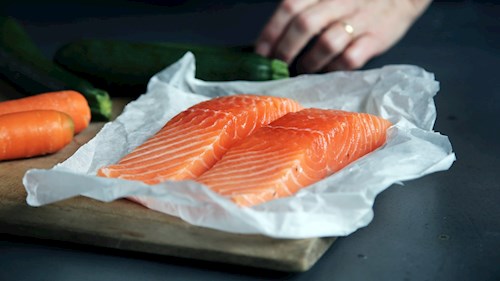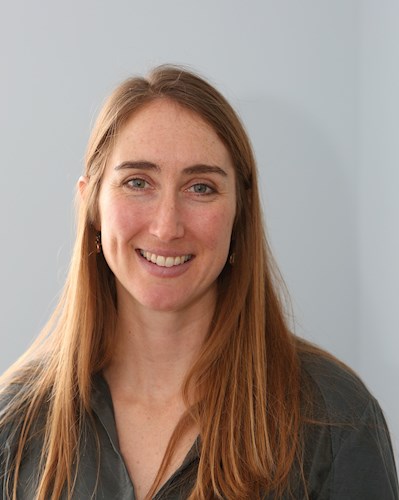

Allison Madison
I cycled through the Ozarks last fall with a friend who is a fisheries biologist from Washington state. We camped out on mountain peaks and refueled in small towns. Overall, our dietary preferences were extremely compatible. Motivated by hunger, we efficiently re-stocked our panniers off the shelves of mom-and-pop gas stations and Super Walmarts - we were in rural Arkansas - without much debate.
Our joint mission ground to a halt, however, the first time we encountered seafood.
Since college, when I learned about the costly environmental impacts of industrial meat production, I have drastically minimized my consumption. If I don’t know where meat comes from, I usually envision the worst. Yet fish, and other seafood, reproducing, foraging, and freely swimming around - until harvested - have seemed a fairly innocuous protein choice.
Javan’s perspective is different. She grew up on Washington’s Olympic Peninsula and worked in fisheries management throughout the Pacific Northwest and Alaska. These experiences have attuned her to the environmental issues in the ocean outside her backdoor.
Worldwide, we’re pillaging our ocean fisheries. Overfishing drives up the carbon emissions associated with capture as it becomes more and more difficult to find fish in our increasingly empty oceans. We are depleting them of both targeted species and bystanders, or by-catch, the fish, turtles, birds, and sea mammals inadvertently caught, and often injured or killed, through efficient but indiscriminate fishing methods.
In response to decreases in wild populations, we’ve seen an increase in fish farms. Fish-farming reduces the fuels required for harvest, yet requires significant carbon inputs to grow and process corn, soy, animal bones, blood, etc. into fish flakes. High concentrations of fish in fish farms lead to high concentrations of waste, disease, and parasites. To counteract these issues, animals are treated with pesticides and antibiotics.
The Monterey Bay Aquarium’s Seafood Watch provides comprehensive regional recommendations for fish to choose and avoid, but here are a couple rules of thumb:
Choosing small fish like sardines, bluegill, and perch, reduces both your carbon footprint and the toxins you’re ingesting. (Review the DNR’s safe-eating guidelines for detailed information on Wisconsin fish consumption advisories.) Bioaccumulation of mercury and other poisons is increased in higher trophic level species like the tuna I would have chosen without Javan’s advice. Her primary concern, however, wasn’t the danger to us, but rather the stress placed on these larger fish species. Compared to smaller fish, larger fish are less resilient to fishing pressures as they generally grow and reproduce more slowly.
If you’re interested in fishing yourself, but don’t yet have the skills and expertise, check out the DNR’s Fishing for Dinner or Angler Education classes that are held throughout the state.
Prefer to buy your fish filleted? Superior Fresh salmon are raised aquaponically in Hixton, Wisconsin. Aquaponics, a portmanteau of “aquaculture” and “hydroponics,” describes systems in which fish and plants are grown in tandem in a way that mimics natural ecosystems. Fish waste (poop) becomes a nutrient source for the salad greens, helping to close the loop of food production, reducing both inputs and outputs. You can find their greens, sold at Kwik Trips across the county and state, on their store locator page. Three Madison stores currently stock Superior Fresh salmon.
Rushing Waters boasts chemical and antibiotic-free rainbow trout farm-raised in Palmyra, Wisconsin. You can order fish fresh or purchase smoked fillets. Rushing Waters offers group tours of their facility; Superior Fresh may accommodate educational group tours.
Other regional Best Choices from the Seafood Watch list include: whitefish from Lake Michigan, rainbow smelt, and yellow perch from Lake Erie. Even these recommendations, unfortunately, require addendums which further exemplify the complexity of consumption chains.
Fish are much more efficient at converting feed into animal protein than cattle, pigs, and even chickens. This makes them a great meal choice for the environmentally-conscious consumer. Deciding which fish to eat requires a bit of research. Like with most things, however, local is best. Locally-grown fish don’t need to be transported under refrigeration for thousands of miles and their harvest doesn’t contribute to the disruption of stressed oceanic ecosystems.
It’s difficult to be aware of all the impacts of our consumption. Keeping consumption local reduces our carbon footprint and the likelihood that we’ll contribute in unintended ways to ecosystems across the globe. Thankfully in Wisconsin, whether you want to source your catch at the lake, or the grocery store, we have lots of options for local fish.

Allison has studied and taught sustainability for many years. From her native Wisconsin, she has ventured out to mountain ranges and lakeshores across the country and back again. She writes for the Dane County Office of Energy & Climate Change to give readers food for thought and actionable suggestions to be a part of the county’s work to address climate change. Together we can forge a better future. Together. Dane County.
The Dane County Office of Energy & Climate Change maintains this blog as a way to offer:
To be sure that you don't miss new blog entries, subscribe to our email updates.